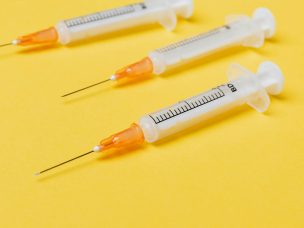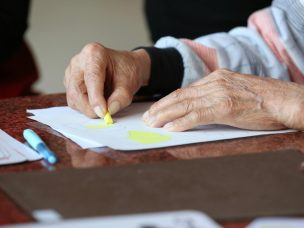Alopecia
Topical Steroids With Fractional Erbium YAG Laser in Alopecia Areata
Medically reviewed by Dr. Shani Saks, D.O. on Sept. 12, 2023 Combination therapy using local corticosteroids and fractional erbium YAG laser was found to be an effective treatment method for alopecia areata. Alopecia areata is an autoimmune condition characterized by non-scarring scalp and body hair loss. Compared to intralesional steroids, fractional laser treatment was found to...
Effectiveness and Safety of Ritlecitinib in Adolescents With Alopecia Areata
Medically reviewed by Dr. Shani Saks, D.O. on Sept. 12, 2023 Ritlecitinib showed good efficacy and safety for alopecia areata treatment in adolescents in this study. Alopecia areata (AA) is an autoimmune disorder characterized by non-scarring alopecia of the scalp, face, and/or body that is caused by an immuno-inflammatory pathogenic process. Globally, AA has a...
Treatment of Chronic Pruritus: Narrowband UVB vs. Broadband UVB
Medically reviewed by Dr. Samuel Sarmiento, M.D., MPH on August 3, 2023 For treating patients with chronic pruritus, narrowband ultraviolet B was found to be equivalent to broadband ultraviolet B. In inflammatory skin conditions, phototherapy is an important treatment technique. Ultraviolet light therapy may reduce pruritus in people who suffer from chronic pruritus (CP), whether...
Trichoscopy in Alopecia Areata and Trichotillomania in Skin of Color
The characteristic trichoscopic features aid in the diagnosis of trichotillomania and alopecia areata in skin of color, which in turn reduces the need for invasive procedures. The diagnosis of hair loss is focused on history taking, scalp biopsy, and histopathological findings. Trichoscopy aids in identifying diagnostically challenging conditions such as alopecia areata (AA) and trichotillomania...
Hearing Impairment in Patients With Alopecia Areata
There is a greater prevalence of hearing loss among alopecia areata patients compared to healthy controls, which can be attributed to the involvement and destruction of follicular melanocytes. Alopecia areata (AA) is characterized by the autoimmune destruction of hair follicles. The autoimmune process may also involve the follicular melanocytes, eventually leading to hearing changes in...
The Hidden Psychosocial Weight of Alopecia Areata
A comprehensive study explores the often overlooked psychosocial implications of alopecia areata, illuminating the profound emotional burden experienced by patients. The findings underscore the necessity of incorporating psychosocial impact into assessments of disease severity and patient management strategies. Alopecia areata patients suffer from considerable emotional distress, negative self-perception, and stigma. The impact of alopecia areata...
Study Investigates Incidence Rates of Adverse Events in Alopecia Areata
A recent study provides a comprehensive analysis of the incidence rates of infections, malignancies, thromboembolism, and cardiovascular events in alopecia areata patients, contributing crucial insights to optimize treatment strategies and patient management. The study identified a higher incidence rate of herpes simplex infection among patients with alopecia areata compared to the matched non-alopecia areata cohort....
Physician Perspectives on Alopecia Areata Treatment Decision-Making
A new study explores the values and attitudes of physicians when helping patients choose an alopecia areata treatment. It may reveal the complexities of decision-making, potential communication barriers, and the possible role of shared decision-making tools. Alopecia areata treatment decision-making involves considering a variety of treatment factors and patient characteristics. Physicians express the need for...
Early Research Into Selectively Inhibiting JAK1 to Treat Alopecia Areata
Janus kinase inhibitors have been used to treat alopecia areata, but Janus kinase 2 inhibitors tend to cause adverse effects. Selective Janus kinase 1 inhibition was shown to be a promising and effective treatment in a mouse model of alopecia areata and in vitro human cells. Janus kinase (JAK) inhibitors have been shown in previous...
More Medical News














